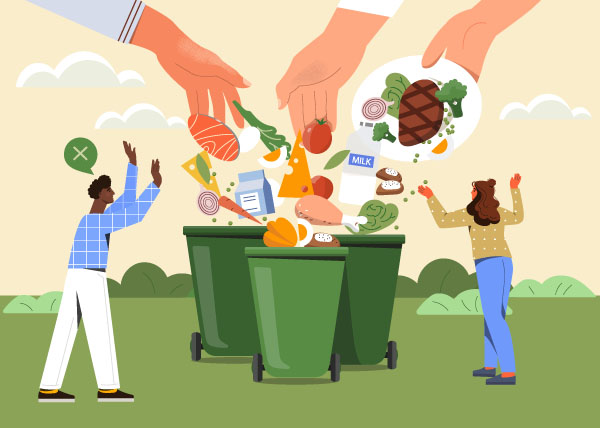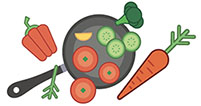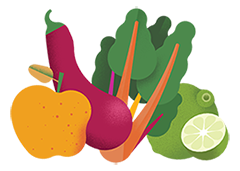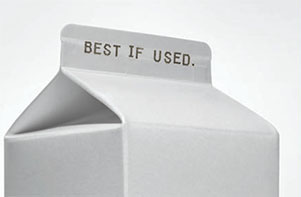This page contains affiliate links which support SalvageFood.org, a 501(c)(3) nonprofit, if you make a purchase.

Save Money (and the Planet) by Reducing Food Waste
A 2020 study conducted at William & Mary’s Department of Kinesiology & Health Sciences found that the average American spends about $1,300 a year — more than $100 per month — on food that ends up being wasted.
Meat and seafood accounted for the largest portions of budgets spent on wasted food, followed by fruits and vegetables, grains, sweets and dairy.
The average American spends more than $100 per month on wasted food
According the US Environmental Protection Agency, food is the single largest category of material placed in municipal landfills in the United States, accounting for 24% of solid waste in those landfills. This food waste emits methane which is a major contributor to global warming. Municipal solid waste landfills are the third-largest source of human-related methane emissions in the United States.
Reducing this food waste presents opportunities to increase food security, promote resource and energy conservation and address climate change.
Reducing your food waste is a win for you and a win for the environment. Here are some ways that you can reduce food waste, save money and help save the planet:
- Plan your meals.Be sure to look through your refrigerator, freezer and pantry and incorporate foods that you already have on hand into your plan. Use a meal planning app such as Yummly.com which allows you to take pictures of the foods you have and generates recipes using some or all of those ingredients. Reduce waste (and skip a trip to the store) by using up what you already have.
Find recipes using what you have in your fridge and pantry using the SuperCook App.
- Use shopping lists when you go grocery shopping.Using a shopping list — and stick to it — to avoid making unnecessary impulse purchases.
- Avoid impulse buys.
- Don't overbuy sale items that you can't eat or preserve before they'll spoil.
- Store food properly to make it last longer.Proper food storage will make food last longer. The USDA FoodKeeper App offers users valuable storage advice about more than 400 food and beverage items. Use food storage products such as Food Huggers: Eco-friendly Food Storage.
- Use your freezer to preserve food.Freezing is the best method for preserving food and has been a natural, trusted practice for centuries: Fighting Food Waste with Your Freezer.
- Freeze foods in individual portions.The individual portions can be defrosted as needed and will also defrost quicker.
- Find ways to cook with leftovers and stale or overripe food.Find ways to save food with recipes you'll find at SaveTheFood.com and Hellmann's — Make Taste Not Waste

- Understand the dates on food labels.Don't toss food that's still safe to eat. Many foods are still safely edible after the "best by" date on the label. Read the article: Food Product Dating.
- Learn to preserve foods by canning, drying and pickling.
- Prepare perishable foods shortly after purchase.Clean, cut and divide fresh fruits and vegetables into portions and freeze any which you can't use before they'll spoil.
- Make homemade stock using meat and vegetable scraps.
- Donate food you can't use to food banks.
- Don't over order when dining out.
- Start a compost pile.





